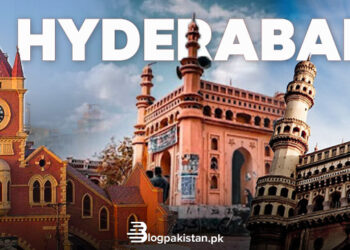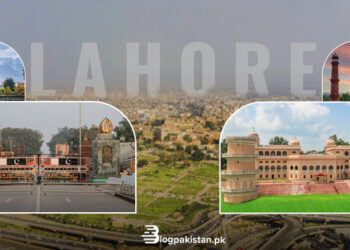Pakistan’s top ten forts are an important part of the country’s reputation as one of the world’s top tourist destinations. These ten Pakistani forts, whether viewed as archaeological treasures or works of historical art, are architectural marvels in their own right. These medieval forts are a must-see for history buffs and architecture lovers alike this summer in Pakistan, so don’t miss them!
Historical Forts in Pakistan
Here, we are going to elaborate on the 10 majestic historic forts in Pakistan that have captured the rich heritage.
- Attock Fort
- Lahore Fort
- Pharwala Fort
- Rawat Fort
- Rohtas Fort
- Sheikhupura Fort
- Mankera Fort
- Baltit Fort
- Altit Fort
- Kharpocho Fort
1. Attock Fort

Location: On the left bank of the Indus, Attock Fort is located near the confluence of the Indus and Kabul rivers.
In terms of military construction, it is one of the finest examples of the Great Mughals. In 1581 A.D., Emperor Akbar laid the foundation of the Fort on his way back from Kabul. Its construction was overseen by Khawja Shamsuddin Khafi. In total, the construction project was completed in just over two years and two months. Governor of Kabul, Mirza Mohammad Hakim, had once revolted against Akbar and was the primary reason for the construction of the Fort. A military outpost to control the crucial river crossing and protect the boat bridge, which has since been replaced with a more contemporary one.
2. Lahore Fort

Location: The Lahore fort is located at the northern end of the walled city.
The Lahore fort, popularly known as Shahi Qila, reflects many centuries. The fort was constructed in the early 11th century. Akbar the Great, the Mughal emperor, dismantled the old mud fort and rebuilt it in burnt brick. Several structures were erected to the fort by the emperors that succeeded Akbar, including Jahangir, Shah Jahan, and Aurangzeb.
UNESCO designated Lahore Fort as a World Heritage Site in 1981. Pakistan’s Archaeology Department Punjab transferred control of Lahore Fort to the Walled City Authority in 2014. Since that time, WCLA has been in charge of running the Fort.
3. Pharwala Fort
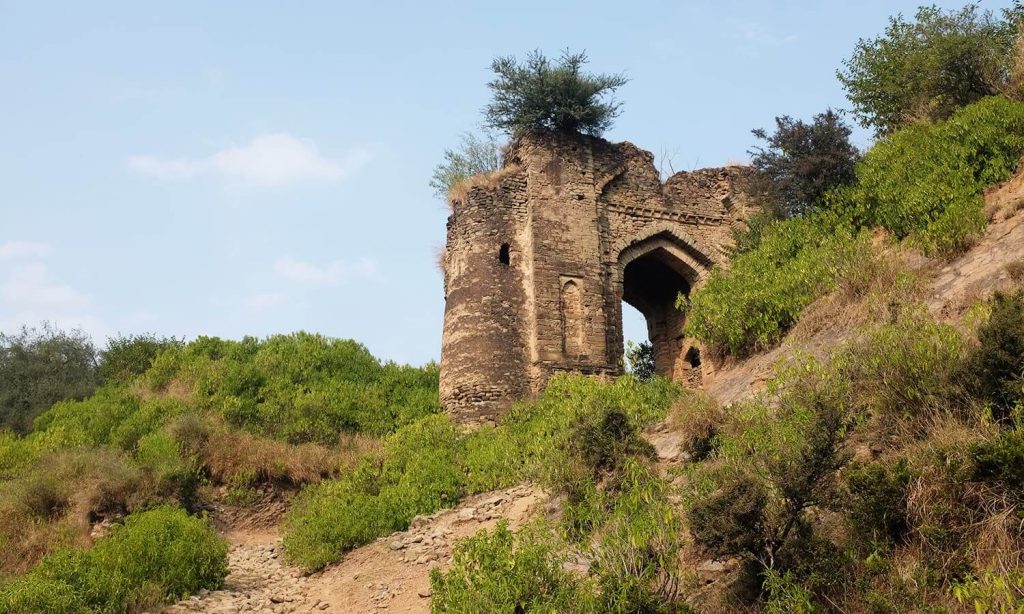
Location: Pharwala Fort, in the Keral Hills, approximately 35 kilometers from Islamabad on the left bank of the river Soan.
Sultan Kaigohar, an associate of Sultan Mahmud of Ghazna, built the fort in approximately 1008 AD on the foundations of an earlier Hindu-era fort. A question surrounds the origin of the name Pharawala. Its name is the subject of numerous suppositions. As an example, local king Kaigohar wore a plume of feathers as a headdress. A plume in Persian is referred to as a “Par” (feather). The person who wears the plume is called ‘wala,’ and the two words combined are pronounced as Par wala, which is spoken as Pharwala due to the fouling of the language. Second, the area is separated from the rest of the mountain range by a chasm. “Par” means the mountain, and “Hala” means the chasm. Consequently, it became known as Par Hala, and as a result it became Pharwala.
4. Rawat Fort

Location: The Islamabad capital’s Rawat Fort, a few miles south of the Soan River in the town of Rawat, is found in the area’s southeast corner.
During the early 15th century, it was built as a serai (caravanserai), a rest house and inn for travelers, or as a mosque. Both the well-proportioned living spaces and the name “Rawat” itself, which is likely a corruption of the Arabic word rebat, which has the same meaning as “serai,” support this theory. As many as 76 separate cells were once there, but many have collapsed or are in a bad state of repair.
In addition to Mas’ud I of Ghazni, who ruled the Ghaznavid Empire in the 1030s and 1040s, the fort is mentioned on a marker near the site. According to this document, dissident troops working for Mas’ud had him detained here before assassinating him in the nearby town of Giri near Taxila. Even if the narrative is real, the modern structure has long since superseded any fort from that time period.
5. Rohtas Fort
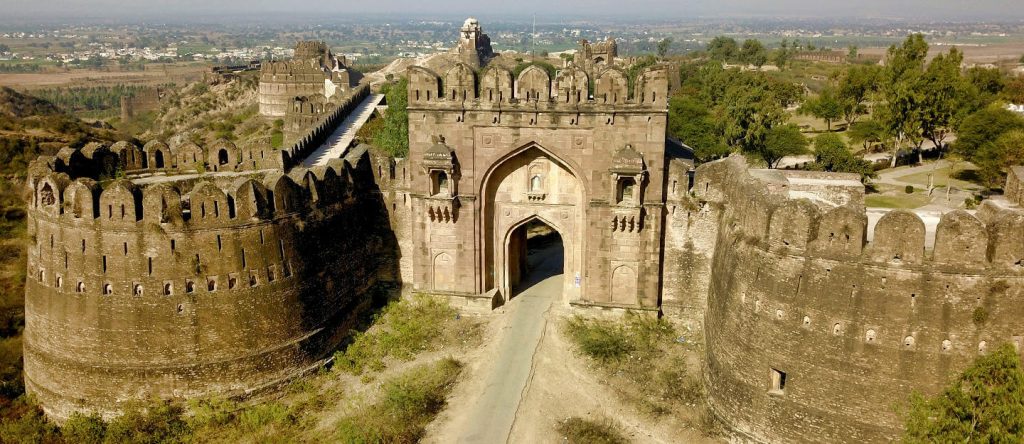
Location: The 16th-century fort of Rohtas is located in Pakistan’s Punjab region, not far from the city of Jhelum.
Rohtas Fort is an outstanding example of early Muslim military construction in Central and South Asia, dating from the 16th century. Massive stone walls with 68 bastions and 12 monumental entrances surround this 70-hectare garrison’s main fortifications. The walls’ perimeter is over 4 kilometers. The fort had a significant impact on the evolution of Mughal architectural style because of its combination of other Islamic countries’ architectural and artistic traditions. During the reign of Sher Shah Suri, the founder of the Suri dynasty, the construction of Rohtas Fort began.
6. Sheikhupura Fort
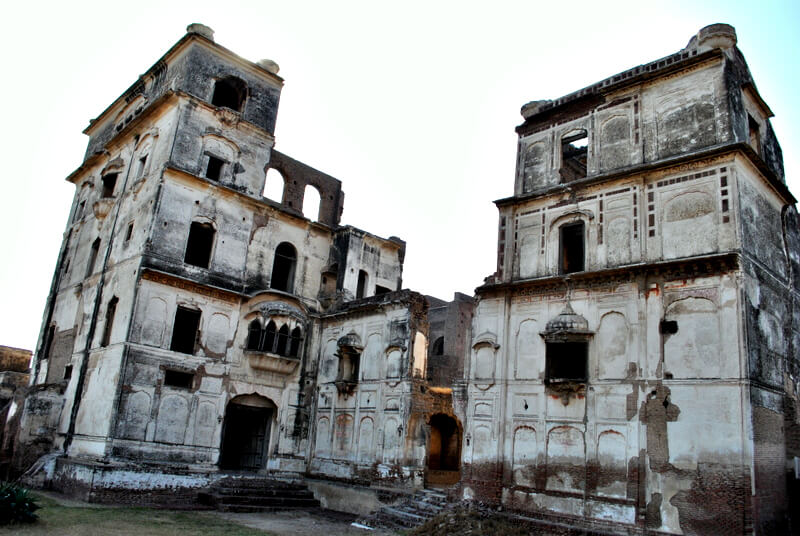
Location: It is located near the city of Sheikhupura in Punjab.
Jahangir constructed the Sheikhupura Fort during his reign as Mughal Emperor. The Tuzuk-i-Jahangiri (Autobiography of Jahangir) mentions that the Emperor handed the responsibility of building the Fort to Sikandar Moeen during his hunting trip to Hiran Minar in 1607AD, however there is no clear evidence to corroborate this.
This fort was built during Punjab’s Sikh Raj period. Before the Sikhs came to power, archaeologist and historian Ihsan H. Nadiem claims that Sheikhupura Fort was used as a hideout by outlaws who were looting the land.
7. Mankera Fort

Location: The Mankera Fort is located 5 kilometers to the left of the Bhakkar highway.
The fort, which goes back to around 1,000 BC, is a key element of the city. Bhakkar Highway is half a kilometer away from the monument. For the most part, the fort is now a wreck. Other than a wall, a tomb, and some masonry remains, there appears to be nothing left. In addition, the defense wall has also collapsed.
A hospital and a school have also been built inside the fort, along with the homes of the villagers that reside there. Inside Mankera Fort, there is also a small fort that was originally used as a house by the royal family.
8. Baltit Fort

Location: In the Hunza valley, near the town of Karimabad in Gilgit Baltistan.
Baltit Fort is a historic fort situated in the Hunza valley. As of 2004, it has been on the UNESCO World Heritage Tentative list. Karimabad is located on the edge of the spectacular fort, which has protected the feudal regime of Hunza from attack for centuries. The fort’s foundations stretch back 700 years, and it has been rebuilt and altered numerous times since then. While married to a Baltistan princess in the 16th century, a local prince had her bring Balti craftsmen to rebuild the building as dowry.
In 1945, the Hunza Mirs moved from the fort to a new palace on a lower hill. The fort began to deteriorate, raising fears that it might be destroyed. Following a survey by the Royal Geographical Society of London, the Aga Khan Trust for Culture Historic Cities Support Program launched and sponsored a restoration project. Baltit Heritage Trust now operates a museum in the fort, which was finished in 1996.
9. Altit Fort

Location: Altit Fort is situated in the Altit town in the Hunza valley in Gilgit Baltistan.
As a show of might to the Mirs of Nagar (ruling family), Hunza’s reigning line built the massive Altit Fort in the 11th century, which now towers over the Karakoram Range.
Even though it’s been repeatedly attacked since construction, the structure has held up well against natural disasters as well, making it one of history’s most remarkable architectural feats. The shikari Tower (hunter’s tower) is the lone tower on the remarkable building, which rises almost 1,000 feet above the Hunza River. It was created to keep an eye on the entire region, especially during times of conflict. The Hunza valley was under frequent Russian and Chinese attack throughout that time period.
10. Kharpocho Fort

Location: It is situated in Skardu city.
Skardu’s Kharpocho fort is an example of Skardu’s ancient architecture. Most notably, from the top of Kharpocho, one can overlook the entire city of Skardu. Skardu Fort, also known as Kharpocho Fort, is located in Gilgit Baltistan’s Skardu city. “King of Forts” in Balti, Kharpocho is a stunning sight for travelers. About 40 meters above the city’s surface, the fort sits atop a mountain. Located on the Indus River’s banks, the fort is a popular tourist destination. The Shigar River meets the Indus River at this fort. The king and queen used to dwell here with their family, and it has a well-known reputation.
The fort was constructed in the late 16th century by King Ali Sher Khan Anchan. For many wars, the fort served as an important military position. Local soldiers were aware of the conflict and the fort’s placement in the town during the struggle against the Dogra, the region’s ruler during the partition of the subcontinent. As a result, they first occupied the fort in order to keep an eye on the city’s entrance and exit.
Do share your experiences and photos of any of the forts you have visited.















